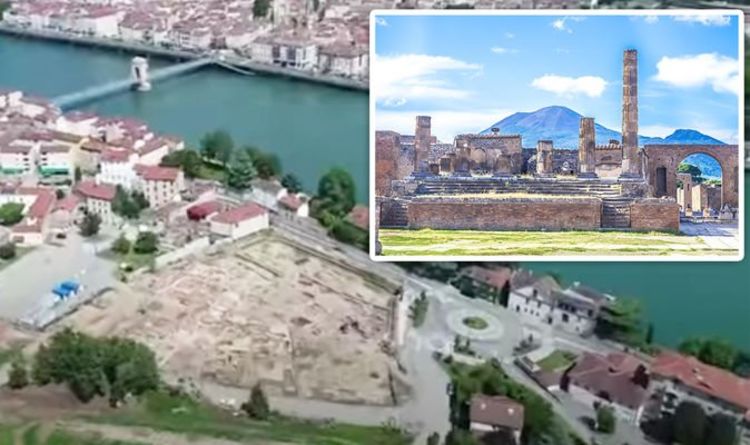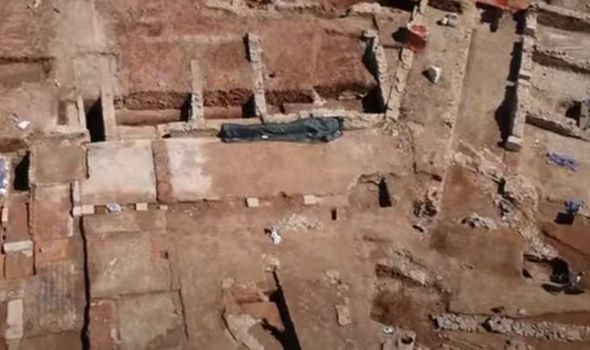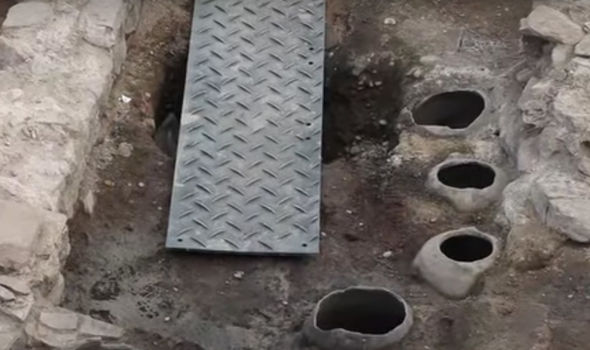Archaeology breakthrough: 2,000-year-old ‘mini Pompeii’ discovered in France
This find took place in the district of Sainte-Colombe, southern Lyon, and was dubbed a Mini Pompei by its similarity to the Roman town buried in Naples after the Vesuvius eruption in 79 A.D.
Archaeologists have discovered vestiges of armor worn by what they believed to be a retired Roman officer, as well as beautiful mosaics and pottery frozen in time.
Like the famous Pompeii, experts believe that the city was buried under ash and debris after a huge disaster, but it did not follow a volcanic eruption.
The site’s main archaeologist, Benjamin Clement, told PBS in 2017: “So we’ve just discovered the pieces of huge armor from the first century.
“Here we have a small part of the belt and this type of decoration comes from the belt on the front of the armor.


“We have all the parts of the armor, all the little parts that come out of it.
“Only 10 minutes ago we found a little sword, I’ll show it to you.”
“If you come and look, we also have all the protection for the shoulders. “
Clement explained how the findings provide insight into life over two millennia ago. He added, “Mosaics are really interesting because they are part of art, like a statue.
“But for the understanding of the lifestyle of the Roman people, most of them were from the middle and lower classes.

The French Minister of Culture, Marie-Agnès Gaidon Bunel, added: “There has been an increase in clandestine treasure hunting in France in recent years, with objects recovered from archaeological sites, which we are not at all happy.
“The Minister of Culture is trying to combat this practice because the removal of these objects from their archaeological framework prevents us from dating the site and they are actively marketed outside of France.”
Some have called the discovery the most important of the past 50 years, as it helps to rebuild the stronghold of the Roman Empire over France.
Unlike Pompeii, tourists will not be able to get a first-hand look at the site, as it has now been reconstructed, with an apartment complex and parking.





